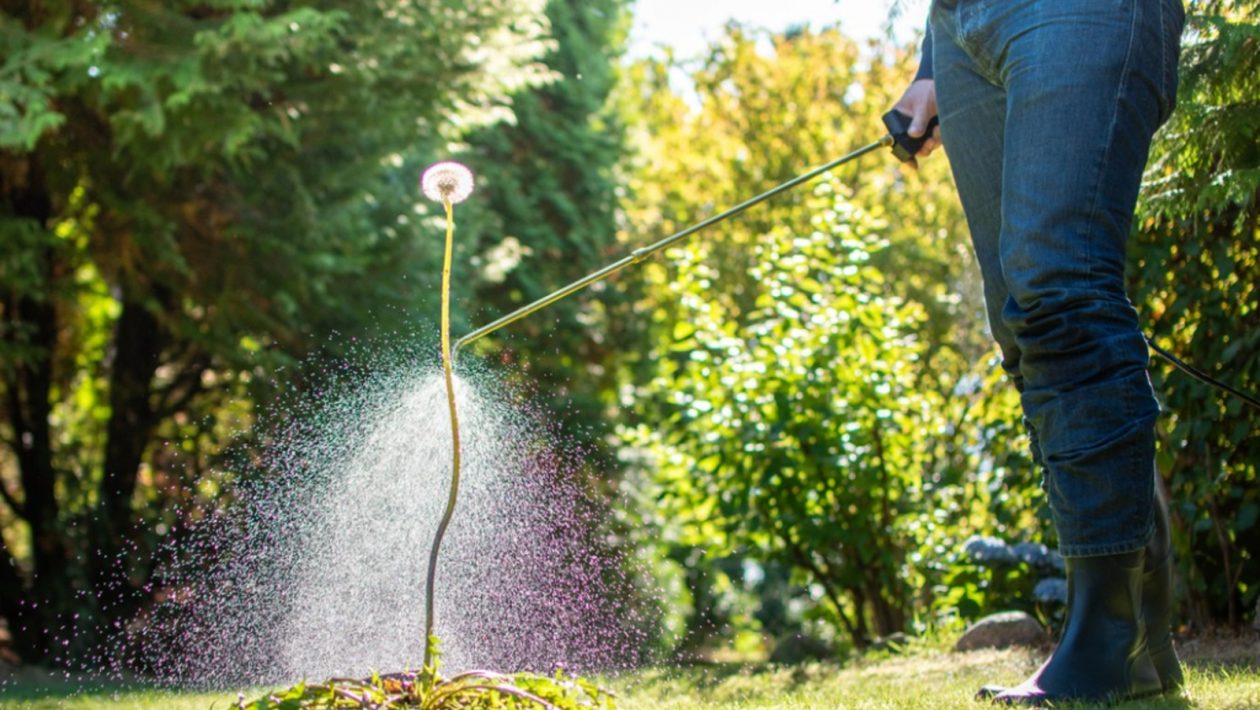Nothing is more infuriating than a stubborn weed, especially after trying other weed control methods; pulling, tilling, hoeing, and the likes. Apart from making the garden look untidy or unkempt, it is also an indicator of an unhealthy garden. The fear of using herbicides is a deep-seated one for most gardeners because they do not have the proper knowledge on how to use them effectively and are scared of it affecting their main plants. However, when used the right way, herbicides can still be helpful to gardeners.
Table of Contents
What are herbicides?
They are chemical agents used to kill unwanted plants called weeds. They are used to control or manipulate undesirable vegetation and can either be selective or non-selective. This explains that; selective herbicides will kill specific weed species and leave the other plants unharmed, while non-selective weed killers have one job, to control vegetation without singling out any species. It is mainly used in large-scale farming or even to clear the land before starting a new garden.
The gardener’s need and type of herbicide to be used play a huge role in whether the herbicide use is effective and whether the application is safe, especially for edible plants.
When to use herbicides?
Herbicides in gardening are used when the manual weed control options have been exhausted to no avail. Hence, using a chemical agent is always the last option. The manual control options are more environmentally friendly.
You can choose to use either a pre-emergence or a post-emergence herbicide
Pre-emergence or post-emergence herbicides?
Preemergence herbicides kill the weeds before they appear on the soil, while post-emergence kills the weed while they have already grown. Choosing which of these methods of application is based on which will kill the weed more effectively. They are usually used as selective herbicides.
Pre-emergents are effective during late winter or early spring, while post-emergent are used in spring after the weeds grow.
Tips on how to use herbicides
Below are tips that should guide your selection and proper usage of herbicides;
- Identify the weed type: Protect yourself: The gardener should put on protective gear, hand gloves, protective mask, gardening boots, and long sleeves. This is to avoid the skin coming in contact with the harsh nature of the chemical. Do not also wash these clothing materials with another laundry.
- Read the Label: Most herbicides come with instructions on their label, containing the type and how to use it safely and get the maximum results. Read and follow accordingly. Use the labeled application and only use a higher rate if necessary and tested previously.
- Protect the other plants in the garden: you can protect other plants by making a cardboard collar to fit around the weed before applying the herbicide.
- Calibrate your equipment: This helps the herbicide to be applied uniformly to all sections and allows for proper control.
- Mix properly: The amount of water, herbicide per surfactant area should be followed to the latter; this helps to save cost, time and allows for even distribution.
- Keep out of reach of children and in a cold, dry place: Like most chemical substances, herbicides should be kept away from the reach of children, and only the needed quantity should be bought at a time. Also, your children and pets should not be left wandering around the garden when it is time to spray the garden.
- Proper sanitation: Clean all equipment before and after treating your garden. These equipment include; sisters, sprayers, or granular applicators.
- Check equipment always before use: check for leaking connections or faulty nozzles.
- Follow the right timing: Preemergence herbicides should be sprayed during summer before weed seed emergence, and post-emergence herbicides in late spring or fall.
- Apply herbicides in a continuous manner with little overlap: be conscious of the area you are spraying so that there will be no overlap, and you will not step on areas you have already sprayed.
Additionally if you want more herbicide tips, then visit Partners in Home.











